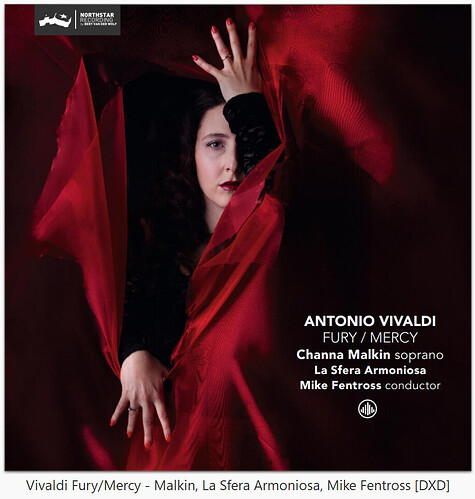You are using an out of date browser. It may not display this or other websites correctly.
You should upgrade or use an alternative browser.
You should upgrade or use an alternative browser.
Undoubtedly this is a great recording but it is only 43 minutes of music while Nativedsd is charging full price for the dsd 256 version ….This new release in the ongoing series of outstanding organ recordings from APSoon Recordings is their best yet. If you love great organ recordings, just get this now! It will blow you away.
Live recording direct to DSD256, with some of the deepest most powerful bass you will hear in a recording...
View attachment 158968
See my complete review here:

apsoon recordings at the organ - Positive Feedback
apsoon recordings at the organpositive-feedback.com
This is a little off subject but I was curious.Do you notice the difference between "Pure" if it is originally recorded with DSD256 or if it is "Pure" recorded from a master tape. I think the DSD256 would be sharper but what have you noticed or drawn conclusions? Your experience is greater than mine.
Last edited:
I wouldn't say the Pure DSD 256 vs. the Analog to DSD 256 files are "sharper". But Pure DSD 256 recordings are very clear and vivid. Definitely worth a listen if your audio system plays DSD 256 files.This is a little off subject but I was curious.Do you notice the difference between "Pure" if it is originally recorded with DSD256 or if it is "Pure" recorded from a master tape. I think the DSD256 would be sharper but what have you noticed or drawn conclusions? Your experience is greater than mine.
Pure DSD256 from an analog source is very high quality audio. They key is avoiding a journey through PCM. What you will hear, however, when coming from an analog source is that characteristic "analog" sound quality--for better or worse.This is a little off subject but I was curious.Do you notice the difference between "Pure" if it is originally recorded with DSD256 or if it is "Pure" recorded from a master tape. I think the DSD256 would be sharper but what have you noticed or drawn conclusions? Your experience is greater than mine.
When that analog source is tape, you will hear the sound of tape. If it is a good, well aligned, carefully calibrated tape deck at 15ips or 30ips, with an excellent tape head preamplifier, the sound quality will be wonderful. It will have all those open, airy, full dynamic range characteristics that tape aficionados love (and count me among them). But, it will also contain the limitations of tape. While there is greater dynamic range than an LP, it is still less than DSD256 provides. For examples, listen to any of the Pure DSD256 releases from High Definition Tape Transfers when the source is identified as a 2-track 15ips tape. Or listen to any of the albums from analog tape listed in my Pure DSD256 From Analog Tape: My Top-of-the-Pile list.
Specs will tell you there is higher distortion with tape, too. But can you hear that? Doubtful. It is more spec-manship that listening reality. Is it subtly less transparent than a direct to DSD256 recording? Yes, possibly. But the differences you may hear are more dependent on differences in the choice of microphone preamps, tape head preamps, and cables than simply the use of tape.
Hunnia Records releases their Pure DSD256 files from an analog mixing console--sometimes directly from the microphones, but most often from Pure DSD256 tracking channels converted back to analog, mixed and EQ'd in the analog mixing console, and then converted to DSD256. The sound they get from mixing in analog is rich, sweet, beautifully rounded but still extremely detailed and well defined. They deliver superbly beautiful and highly nuanced recordings.
Eudora Records delivers Pure DSD256 recordings pretty much straight from the microphones. Gonzalo's releases are DSD-Direct Mixed, entirely in the DSD domain with no analog mixing involved. His are perhaps the purest example of recordings created entirely in the DSD256 domain. They have that crystalline purity and clarity, with immense dynamics, that I hear only with entirely DSD256 recording chains. But, he trades off some of the warmth and rounded beauty of analog for that utter clarity and transparency.
All of these examples are different approaches to achieving a Pure DSD256 recording. They do have subtly different sonic characteristics. But, the difference are down to what we hear when listening to different very high quality electronics and to difference in tube electronics versus high quality solid state electronics. Different flavoring, if you will.
DSD256, without additional post processing activities, is the most transparent recording technology available today, and for the foreseeable future. If the analog feed to its modulation process is a microphone, its sound is indistinguishable from listening to the microphone directly. If the analog feed is a tape recording, its sound is indistinguishable from the sound of the tape recording played directly. DSD, and DSD256 specifically, is an archival intended technology, pressed into a consumer delivery format by Sony and Philips with SACD, to extend their licensing stream with the then ending of their CD licensing.This is a little off subject but I was curious.Do you notice the difference between "Pure" if it is originally recorded with DSD256 or if it is "Pure" recorded from a master tape. I think the DSD256 would be sharper but what have you noticed or drawn conclusions? Your experience is greater than mine.
In the music recording business, absolute transparency is not high on the list of objectives. Emotion is. Acoustic music is well served with pure DSD recording and direct mix post processing when the tonality and dynamic range of the instruments, WITH the acoustic environment they're recorded in, is of high importance . However, if the emotion factor the producer/artist feels is not meeting their objectives, then some amount of post processing sweetening is applied to achieve it. This involves leaving the DSD domain, and is the usual post production workflow employed in recordings today.
DSD, or more specifically one-bit Pulse Density Modulation, is simply a music recording facilitation tool as well as a delivery format. It has the advantage of absolute transparency in converting continuous analog level variations into a continuous digital bitstream, but the disadvantage of producing no binary digital values (samples). That makes it storable and retrievable, but not processable in a digital computer. For that, it needs to be converted to a digital value based format (PCM), or remodulated. All format or modality conversions are lossy to some degree. That's extremely important in the analog domain, and not quite as important in the digital.
However, the other advantage of DSD deliverables is the matching of the DAC input format to the DAC type. The vast majority of DAC's are Sigma-Delta Modulator based, and perform at their best when they do not have to on the fly convert PCM into PDM (DSD). Also, it's even better if the DSD feed is at the highest bitrate that the DAC supports.
In short, DSD is used in recording where it makes the most sense with the music and production objectives. And when employed in its various production forms, provides a direct wired link sound quality wise to the actual session performance.
Last edited:

From the original Crown Records master tape, 1959, in a Pure DSD256 transfer by HDTT. This is a VERY different set of music than we hear in the soundtrack recordings. As HDTT describes, "Unlike Mancini’s official soundtrack album on RCA Victor, this is not simply a replay of the television cues—it is a reinterpretation, seen through the lens of the very musicians who had helped shape that original sound. Here the Peter Gunn themes take on new life: brass punches harder, saxophones smolder longer, and the rhythm section drives with a rawer, more club-ready urgency."
Last edited:

Pure DSD256 transfer from the original 30ips master tape from producer Jerome Sabbaugh of Analog Tone Factory. This album has the golden glow of all tube electronics throughout the recording and mastering chain, at least right up to the HAPI A/D converter. When seeking that certain emotional quotient, it is hard to beat analog and tubes in your recording chain, and Sabbaugh has accomplished this beautifully. Of course, the playing by Chris Cheek, Bill Frisell, Tony Scherr and Rudy Royston is the highlight of the album.
Recorded by James Farber at Power Station, New York, live to 1/2 inch two track analog tape on a custom tube Ampex 351 at 30 ips, November 8-9, 2024.
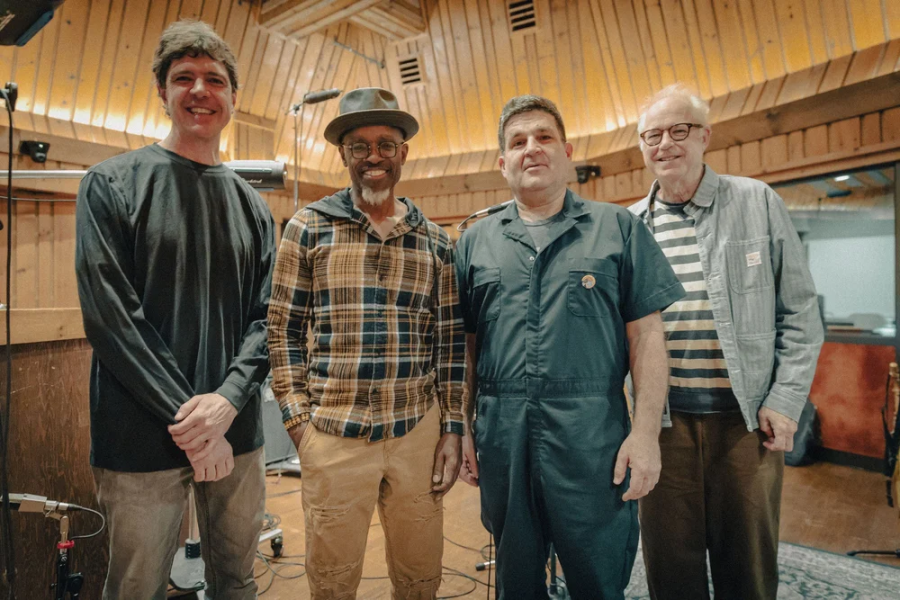
Last edited:

HDTT has today released an update to this 2022 reissue using a new 15ips source tape with greater high frequency extension. He’s also used his new Victor Khomenko designed tube tape head preamplifier which makes a further difference. The improvement in overall sound quality is not subtle if you’re listening to the Pure DSD256 release, which of course your are, right? Folks who previously purchased this album should by now have received an email from HDTT with a link to download the update. New purchasers will get the updated version.

Very nice performances of VW's 5th and 9th Symphonies by Sir Antonio Pappano and the LSO. Nice recording quality once again by Jonathan Stokes for Classic Sound Ltd in this DXD 32-bit release available at NativeDSD. As we've discussed before, while the original recording was made in DSD256, what matters to the final sound quality is the mastering resolution which is what this is--the edit master release.
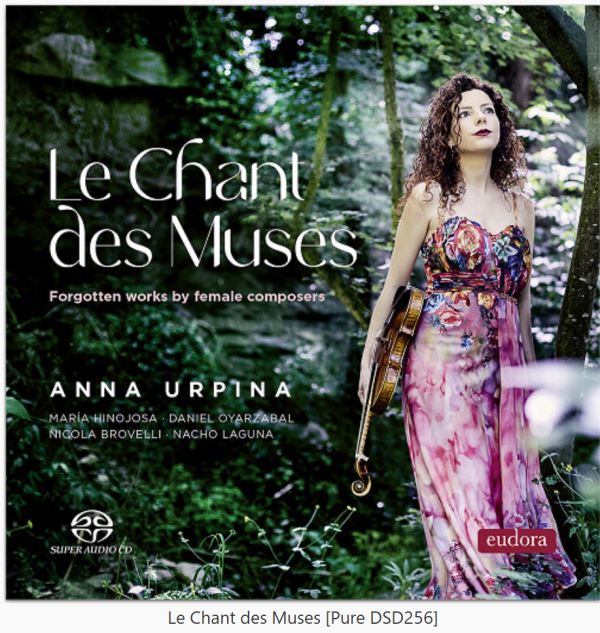
Interesting music, delightfully performed. And the recording quality is top drawer. Gonzalo Noqué has created another "you are there" or "they are in your room" recording, in Pure DSD256-Direct Mixed. The music is "chamber" music with various combinations of violin, cello, theorbo, harpsichord, piano, and voice, all by women composers of the 16th, 17th, 18th, 20th and 21st centuries. One is a 2024 commission by the violinist. So, lots of variety, several are first recordings of the work. Review to come. Album available HERE.
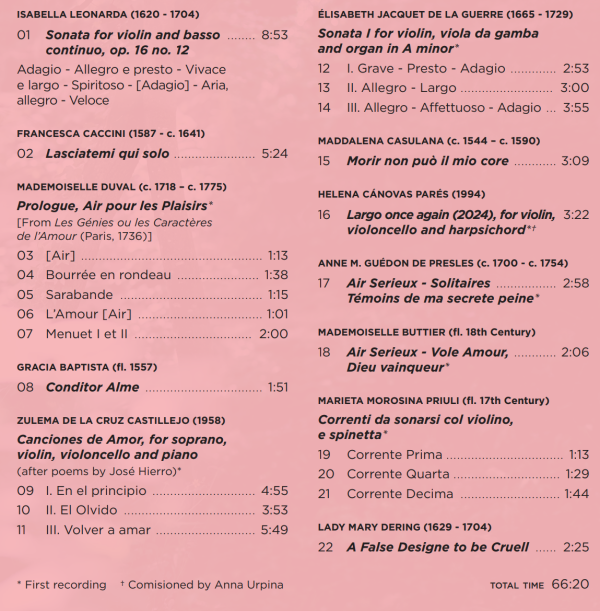
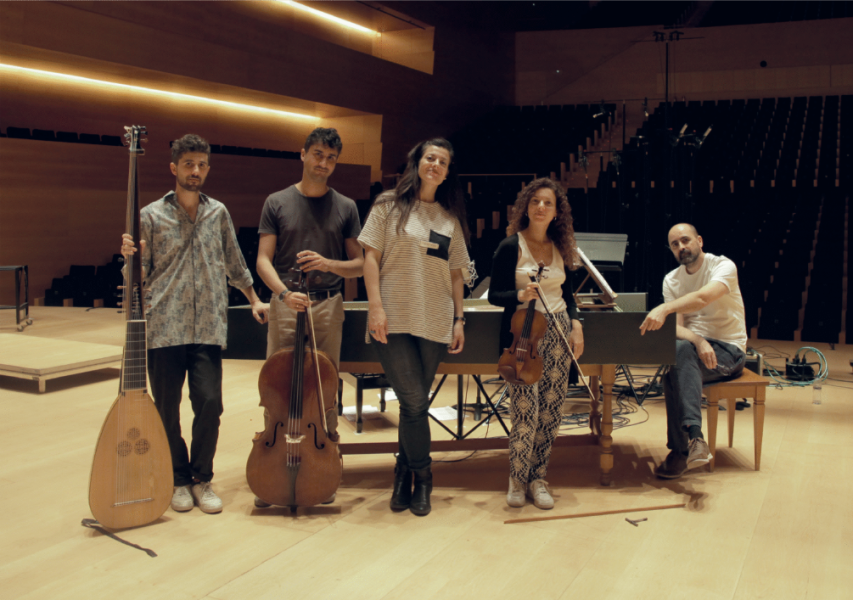
Last edited:
Correction: Jerome tells me he is using a Playback Designs A/D converter, not the Merging Technologies unit I mentioned.Pure DSD256 transfer from the original 30ips master tape from producer Jerome Sabbaugh of Analog Tone Factory. This album has the golden glow of all tube electronics throughout the recording and mastering chain, at least right up to the HAPI A/D converter.
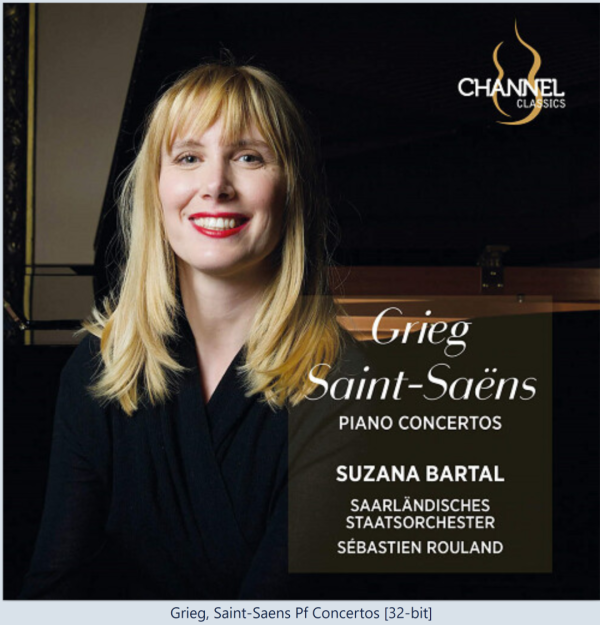
Two warhorses of the catalog in refreshingly energetic and dramatic performances. The Grieg and Saint-Saens Piano Concertos my be well trod musical ground, but it is always a treat to hear them played in such lively, fresh, and dynamic readings as brought to us here by French-Hungarian pianist Suzana Bartal in collaboration with conductor Sébastien Rouland and the Saarlandische Staatsorchestra. If these don't bring you upright in your seat and enjoying every moment, I'm not sure what might serve you better. Review to come. Album available HERE
The original tracking channels are DSD256 but the recording was mixed in DXD, so DXD 32-bit is the edit master and it is to that iteration that I am listening for the best sound possible in my system. As noted many times before, depending on your DAC your system may sound best with the DSD256 derived from the edit master, so listen and compare to determine what your DAC best delivers for you.
Six New Releases at NativeDSD worthy of attention
Over a dozen new releases this past Friday at NativeDSD. Here are reviews of six that piqued my interest immediately. Two are Pure DSD256, including a new release from Gonzalo Noqué at Eudora Records that is simply luscious, and an excellent recital of Poulenc's piano music by Laszlo Borbély with Hunnia Records. Then we have a new orchestral recording from Jared Sacks at Channel Classics in DXD 32-bit, and it is a nice new rendition of two classics of the catalog. And a new label has appeared, Direct Sound Records, committed to purist recordings (in Pure DSD, of course).
My reviews can be found at the following link:
Recent Finds No. 54 A Treasure Chest of New Releases at NativeDSD
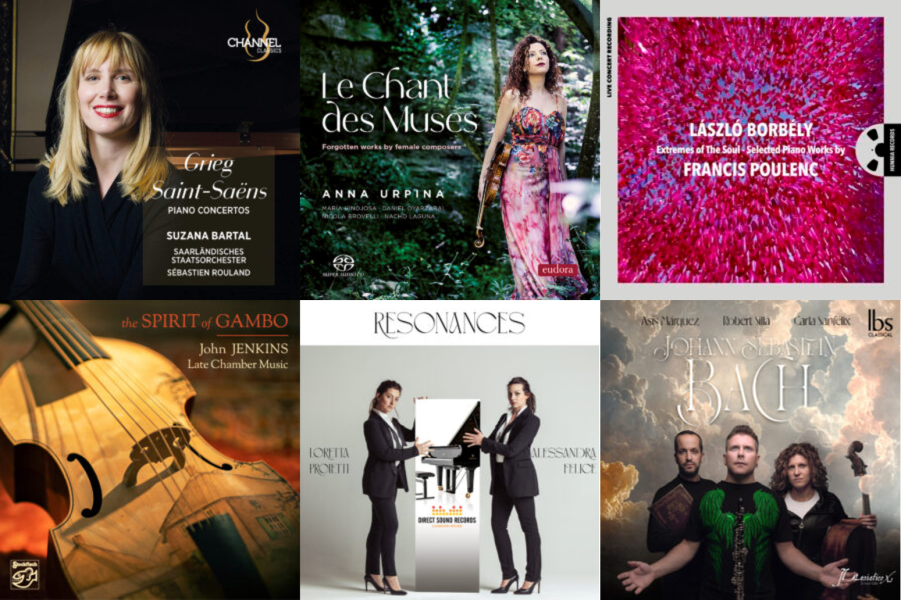
Over a dozen new releases this past Friday at NativeDSD. Here are reviews of six that piqued my interest immediately. Two are Pure DSD256, including a new release from Gonzalo Noqué at Eudora Records that is simply luscious, and an excellent recital of Poulenc's piano music by Laszlo Borbély with Hunnia Records. Then we have a new orchestral recording from Jared Sacks at Channel Classics in DXD 32-bit, and it is a nice new rendition of two classics of the catalog. And a new label has appeared, Direct Sound Records, committed to purist recordings (in Pure DSD, of course).
My reviews can be found at the following link:
Recent Finds No. 54 A Treasure Chest of New Releases at NativeDSD

Here are some new and welcome happenings courtesy of Analog Tone Factory. I'm a great fan of their content and curated artists.
Pure, unadulterated DSD256 captures from tape!
https://www.analogtonefactory.com/dsd-256
Pure, unadulterated DSD256 captures from tape!
https://www.analogtonefactory.com/dsd-256

Listening yet again to another nice Analog Tone Factory release. I continue to be struck by the vintage tube electronics sound signature of these releases. For this vintage jazz, the entire aesthetic works very nicely. The transfer to DSD256 from the 30ips master tapes is as close to hearing the sound of the tapes themselves as I expect to ever get.
From the original Crown Records master tape, 1959, in a Pure DSD256 transfer by HDTT. This is a VERY different set of music than we hear in the soundtrack recordings. As HDTT describes, "Unlike Mancini’s official soundtrack album on RCA Victor, this is not simply a replay of the television cues—it is a reinterpretation, seen through the lens of the very musicians who had helped shape that original sound. Here the Peter Gunn themes take on new life: brass punches harder, saxophones smolder longer, and the rhythm section drives with a rawer, more club-ready urgency."
A bit longer review now posted today of this album, together with some additional HDTT releases that are quite tasty...
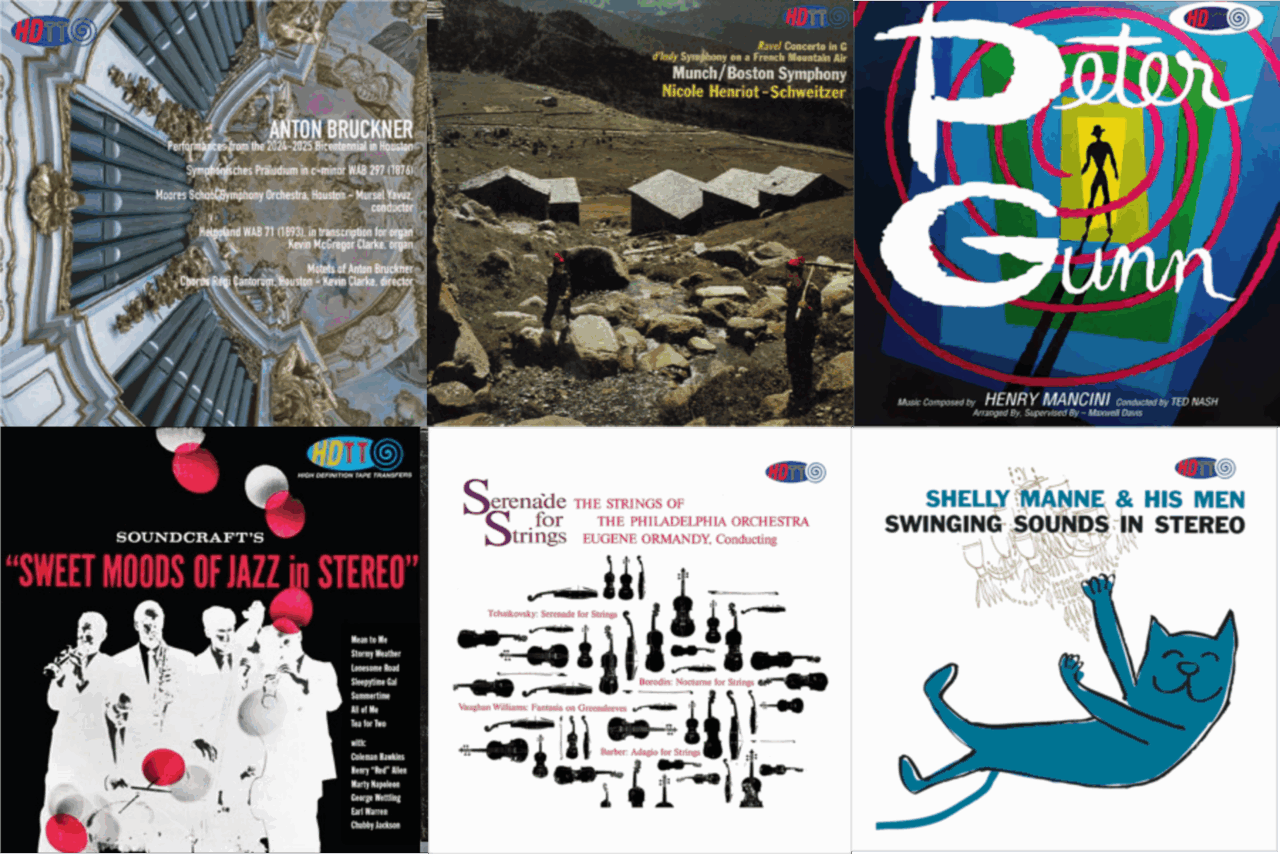
Recent Finds No. 55 Some Special Treats from HDTT - Positive Feedback
Recent Finds No. 55 Some Special Treats from HDTT
PSA: HDTT has begun it’s Fall Sale of 25% Off the entire catalog. You’ll find links in posts above to reviews or look through my Pure DSD256 from Analog Tape: My Top of the Pile listing for suggestions.


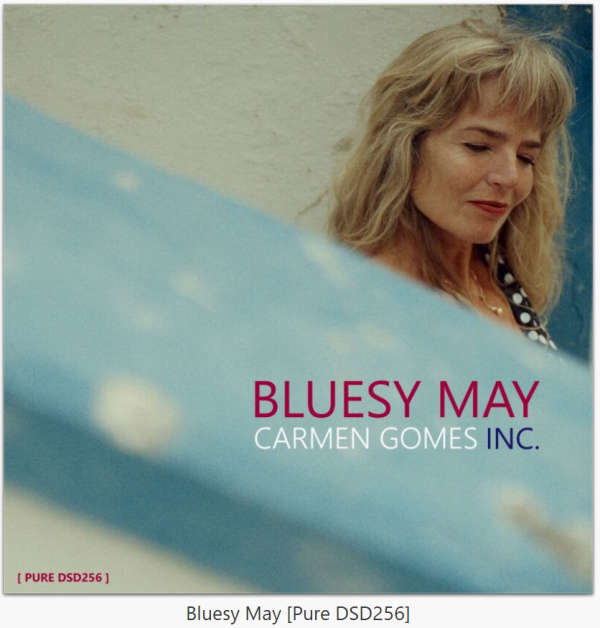
This is Sound Liaison's second Pure DSD256 release as founder/engineer Frans de Rond begins his shift to recording all of his new projects in Pure DSD256-Analog Mixed. I'm a fan of blues/jazz singer Carmen Gomes and her group Carmen Gomes Inc. They've been playing together for a long time and they are a very "tight" band. You'll find my review here:
Bodacious! A Great New Release From Sound Liaison in Pure DSD256
Similar threads
- Replies
- 3
- Views
- 406
- Replies
- 1
- Views
- 824
- Replies
- 22
- Views
- 4K
- Replies
- 39
- Views
- 15K
| Steve Williams Site Founder | Site Owner | Administrator | Ron Resnick Site Owner | Administrator | Julian (The Fixer) Website Build | Marketing Managersing |



